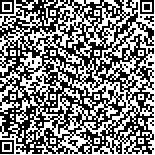| 引用本文: |
谢映, 刘慧慧, 李旭华, 曹徵良, 夏云, 朱沁泉, 胡国恒.基于肠道菌群和代谢组学探讨刘氏小儿推拿干预孤独症谱系障碍儿童的作用机制[J].湖南中医药大学学报,2025,45(1):86-94[点击复制] |
|
| |
|
|
| 本文已被:浏览 1894次 下载 1234次 |
| 基于肠道菌群和代谢组学探讨刘氏小儿推拿干预孤独症谱系障碍儿童的作用机制 |
| 谢映,刘慧慧,李旭华,曹徵良,夏云,朱沁泉,胡国恒 |
| (湖南中医药大学第一附属医院, 湖南 长沙 410007;湖南中医药大学, 湖南 长沙 410208) |
| 摘要: |
| 目的 观察刘氏小儿推拿配合康复训练对孤独症谱系障碍儿童的核心症状及肠道菌群、代谢产物的影响。方法 将60例3~8岁孤独症谱系障碍儿童随机分为观察组和对照组,每组30例。两组均进行康复训练,观察组给予刘氏小儿推拿干预,对照组给予常规推拿干预,每天1次,每周5次,连续干预12周。两组分别在入组时、治疗12周后接受儿童孤独症评定量表(CARS)、第三版孤独症心理教育评定量表(PEP-3)、中医脾胃疾病症状量表评定,统计两组之间的疗效差异。治疗结束当天行肠道菌群检测、血浆代谢组学检测,并采用Spearman相关分析方法,探讨肠道菌群与代谢组学之间的关联。基于KEGG分析差异代谢物,筛选潜在的关键代谢通路。结果 治疗后,观察组有效率(96.67%)高于对照组(73.33%)(P<0.05)。治疗后,两组PEP-3评分均上升(P<0.05),且观察组高于对照组(P<0.05);观察组中医脾胃疾病症状量表评分降低(P<0.05),且低于对照组(P<0.05)。与对照组比较,观察组的肠道菌群在门水平上,放射菌门(Actinobacteriota)水平上调、厚壁菌门(Firmicutes)水平下调;在属水平上,双歧杆菌(Bifdobactenum)相对丰度上调、埃氏菌属-志贺菌属(Escherichia-Shigella)相对丰度下调。观察组与对照组共筛选出双歧杆菌等9个关键菌,代谢组学分析共筛选出6个显著差异代谢物。KEGG通路分析结果显示,差异代谢物主要与氨基酸代谢、蛋白质消化与吸收、氨酰tRNA生物合成等通路相关。结论 刘氏小儿推拿能明显改善孤独症谱系障碍儿童的核心症状,调控肠道菌群如双歧杆菌等菌属丰度,同时可以影响代谢物水平,且部分代谢物的改变与肠道菌群存在复杂的相关性,可能与氨酰tRNA生物合成、氨基酸代谢、蛋白质消化与吸收等途径相关。 |
| 关键词: 刘氏小儿推拿 孤独症谱系障碍 肠道菌群 代谢组学 社交能力 |
| DOI:10.3969/j.issn.1674-070X.2025.01.012 |
| 投稿时间:2024-07-15 |
| 基金项目:湖南省中医药科研计划重点项目(A2023036);湖南省卫生健康委员会科研课题(202206010043);湖南省卫生健康委员会科研计划项目(D202306048765);湖南省中医药科研课题(B2023121)。 |
|
| Mechanism of action of Liu’s pediatric tuina intervention in children with autism spectrum disorders based on intestinal flora and metabolomics |
| XIE Ying, LIU Huihui, LI Xuhua, CAO Zhiliang, XIA Yun, ZHU Qinquan, HU Guoheng |
| (The First Hospital of Hunan University of Chinese Medicine, Changsha, Hunan 410007, China;Hunan University of Chinese Medicine, Changsha, Hunan 410208, China) |
| Abstract: |
| Objective To observe the effects of Liu’s pediatric tuina combined with rehabilitation training on the core symptoms, intestinal flora, and metabolites in children with autism spectrum disorders(ASD). Methods Sixty children aged three to eight years with ASD were randomized into observation group and control group, with 30 children in each group. Both groups underwent rehabilitation training, with the observation group receiving Liu’s pediatric tuina intervention and the control group receiving conventional tuina intervention, once a day, five times a week, for 12 consecutive weeks. Both groups were assessed using the Childhood Autism Rating Scale(CARS), Psycho-educational Profile-3rd Edition(PEP-3), and the Chinese Medicine Spleen and Stomach Disease Symptom Scale at baseline and after 12 weeks of treatment. The efficacy differences between the two groups were statistically analyzed. On the last day of treatment, intestinal flora testing and plasma metabolomics analysis were performed, and the Spearman correlation analysis was used to explore the correlation between intestinal flora and metabolomics. Based on the KEGG analysis, differential metabolites were analyzed to screen for potential key metabolic pathways. Results After treatment, the effective rate in the observation group(96.67%) was higher than that in the control group(73.33%)(P<0.05). After treatment, the PEP-3 scores of both groups increased(P<0.05), with the observation group showing higher scores than the control group(P<0.05).The Chinese Medicine Spleen and Stomach Disease Symptom Scale scores in the observation group decreased(P<0.05), and were lower than those in the control group(P<0.05). Compared with the control group, at the phylum level, the Actinobacteriota level was upregulated, while the Firmicutes level was downregulated in the intestinal flora in the obsevation group. At the genus level, the relative abundance of Bifidobacterium was upregulated, while that of Escherichia-Shigella was downregulated. Nine key bacteria,including Bifidobacterium, were identified in both the observation group and the control group, and six significantly different metabolites were screened through metabolomics analysis. The KEGG pathway analysis showed that the differential metabolites were mainly related to amino acid metabolism, protein digestion and absorption, aminoacyl-tRNA biosynthesis, and other pathways.Conclusion Liu’s pediatric tuina can significantly alleviate the core symptoms of children with ASD, regulate the abundance of intestinal flora such as Bifidobacterium, and affect metabolite levels at the same time. Moreover, some changes in metabolites have complex correlations with intestinal flora, which may be related to aminoacyl-tRNA biosynthesis, amino acid metabolism, protein digestion and absorption, and other pathways. |
| Key words: Liu’s pediatric tuina autism spectrum disorders intestinal flora metabolomics social skills |
|

二维码(扫一下试试看!) |
|
|
|
|




